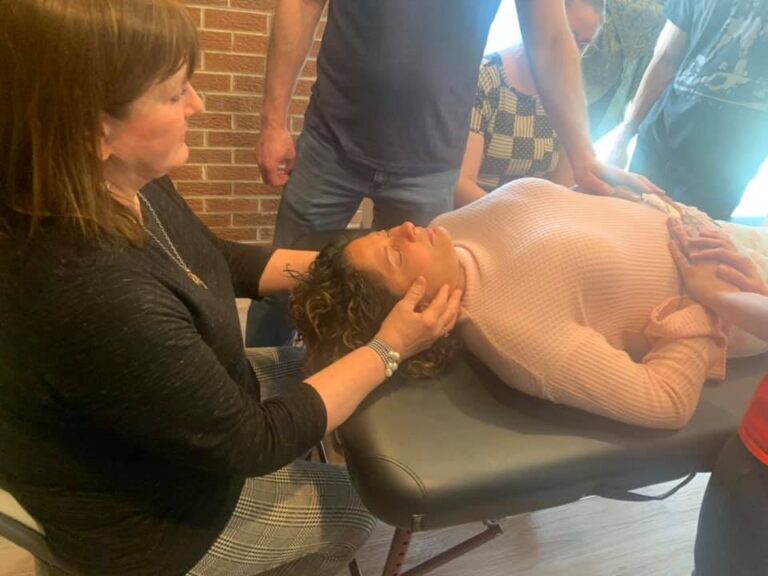The Nasal Release Technique, a revolutionary method developed by Dr. J. R. Stober in the 1930s, offers relief and balance to the skull.
This precise and powerful physical approach adjusts the bones of the skull using a small finger cot attached to an inflatable device. Skilled practitioners gently insert it into the nasal passages, activating the inflatable device to press outward against the bones lining the breathing passages.
Focusing on the sphenoid bone, a key component of the skull, this technique carefully adjusts sutures and relieves impactions in the cranial structure, effectively releasing accumulated forces within the skull.
Known by various names like Endonasal Technique, Nasal Cranial Release, Bilateral Nasal Specific Technique, Functional Cranial Release, and Neurocranial ReStructuring, these terms all describe the same transformative procedure for optimizing cranial alignment.
At the Hobson Institute, we are committed to providing a clear and accessible understanding of the Nasal Release Technique.

Our body is in constant search for balance. When a concussion or birth trauma occurs, the bones of the skull are impacted by force. When the skull is not in proper alignment, the rest of the body will attempt to compensate by changing the way we move. This can create poor posture, breathing difficulties, chronic pain, and even depression. Nasal Release Technique places the bones in better alignment which optimizes the neurotransmitter activity throughout the Central Nervous System.
Before the Nasal Release Technique, we’ll start with an eye exam to find the eye position causing strain. This helps us tailor the technique to focus on that area during treatment. After checking for eye strain, we also look at neck positions to see if any worsen the identified strain. This step often relates to your injury history, allowing us to personalize your treatment for optimal results.
Once your eye and neck positions will be identified. Here’s how the procedure works:
The goal is for each inflation to reach the throat. If not achieved, it indicates cranial bone compression in that region, requiring additional treatments on different dates until success.
As you become more comfortable, the clinician may consider adding more inflations or another finger cot for increased pressure. This, however, is only done based on your tolerance.
Experience the Nasal Release Technique—a gentle and effective approach to promoting overall cranial well-being.
After your Nasal Release Treatment, it’s common to experience some residual pressure in the nose, which typically dissipates within a day or two. Additionally, you may notice sinus drainage, prompting the need to gently blow your nose to clear any mucous. These transient sensations are part of the natural process as your body adjusts, and they contribute to the overall effectiveness of the treatment.
Yes, children can benefit from the Nasal Release Technique. Our skilled practitioners, recognizing the unique needs of children, adjust the procedure by using fewer inflations and adapting the length of the finger cot (balloon) to fit the child’s nasal passage comfortably.
This technique has proven particularly beneficial for children recovering from concussions caused by incidents like a soccer ball or volleyball impact, elbow to the head, or a fall. If your child continues to experience symptoms despite standard concussion treatments elsewhere, we encourage you to consider evaluation and treatment at the Hobson Institute. Our experienced concussion specialists are dedicated to providing personalized care for your child’s well-being.
You will feel pressure in the nose and possibly some cracking of the bones on the side that the force absorbed through the cranium.
The sound is from the bones re-adjusting and releasing pressure at the level of the sutures. This is normally felt on the side where the concussion or force that went through the head was absorbed.
This varies per patient and also depends on the patient availability. Many patients have had success with resolving their concussion type symptoms after 4 sessions and others may need 12 sessions. It depends on how long ago the concussion event occurred and how stiff the cranium has adapted to the concussion.
Yes, it doesn’t matter how old the concussion was. It may take more session to decompress older concussions but that depends on each patient.
years old. This little boy had a bad concussion and was able to tolerate the treatment. The only difference is that instead of 8 insertions, we only do 2 insertions.
We recommend that you at least do 2 which will allow both sides of the cranium to be treated. It is not recommended to have only one side treated as it is an asymmetrical release of the cranium and is not ideal.
The eye position allows the connection of the eye muscles and the sphenoid bone lengthen the most in the position of strain. Therefore after your procedure, we always check to see if the eye strain reduced or went away completely. This is a sign that the technique worked well.
Contact us to make an appointment with one of our clinicians today.